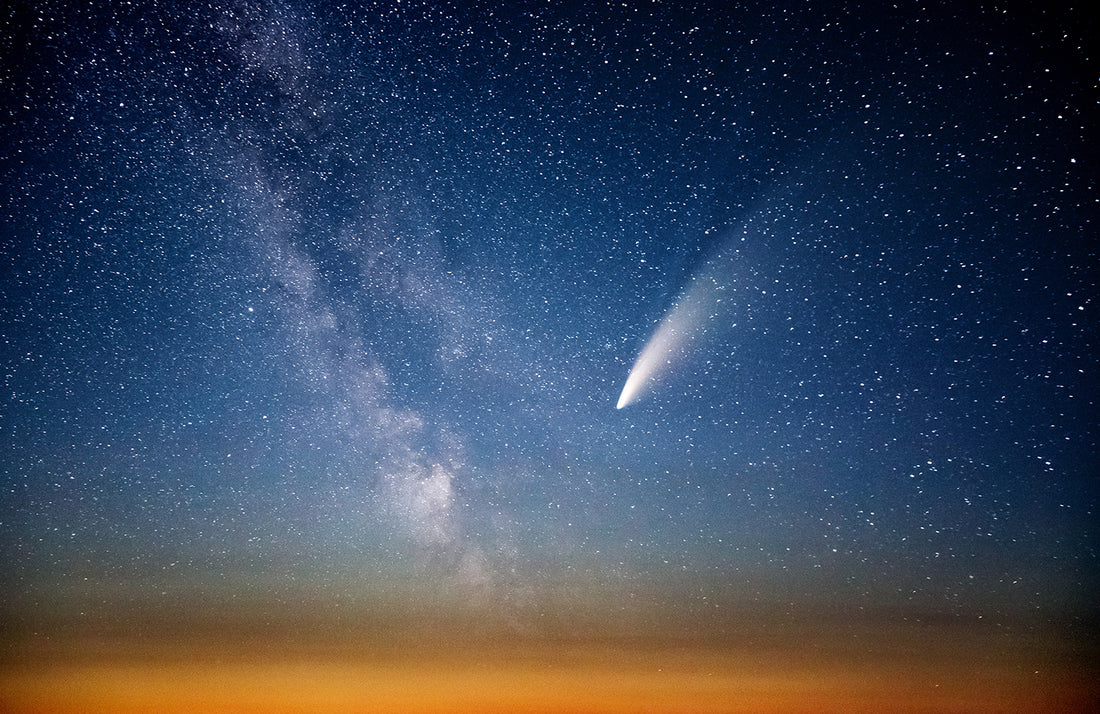
Will You See a Bright Comet Tsuchinshan-ATLAS?
Share
Within the next several months, we may have a good idea as to whether we’ll have a bright naked-eye comet gracing our early autumn evening sky. The comet in question is C/2023 A3 (Tsuchinshan–ATLAS), discovered by the Asteroid Terrestrial-impact Last Alert System (ATLAS) in South Africa on February 22nd, 2023. ATLAS is a robotic early warning system developed specifically for detecting near-Earth asteroids a few weeks to just days before they might impact Earth.
Originally thought to be an asteroid, it was later determined that this same object was photographed six weeks earlier by the Purple Mountain Observatory (Tsuchinshan) in the east of Nanjing, China. It has since been determined to actually be an incoming comet.
When the comet was first sighted, it was far out beyond the orbit of Jupiter, some 680 million miles from the sun. But on September 27th of this year, Tsuchinshan–ATLAS will be making its closest approach to the sun, coming to within 36 million miles; the average distance of the planet Mercury from the sun.

And just over two weeks later, on October 12th, the comet will pass just 44 million miles from Earth.
These figures suggest that the comet might brighten to second or even first magnitude and could develop a notable tail that could make for an eye-catching sight in the western evening sky during mid-October 2024.

Dusty reflections hold key to a good show
Another thing that could work in our favor is that the geometry of the comet relative to the sun and Earth, places it almost in-between the sun and Earth around October 8th, creating a phenomenon known as “forward scattering of sunlight.” If the comet is particularly dusty, dust particles ejected from the comet nucleus would preferentially scatter sunlight in a forward direction and could cause a dramatic upsurge in the comet’s brightness.
Some calculations suggest that Tsuchinshan–ATLAS might become as brilliant as Venus around that time – although in the sky it will also be very near to the position of the sun. In the days that follow, however, the comet should sweep rapidly northward and become well-placed for viewing in the western sky by mid-October. Although it will now be fading as it recedes from both the sun and Earth, it hopefully will be bright enough to be well-seen with the naked-eye, perhaps accompanied by a notable tail as well.


2 comments
Please ensure you visit Settings —> Solar System —> Update Data (bottom of screen) if you are having any issue finding the comet in the database.
Can’t find the comet c/2023 Tsuchinshan in the list of the available objects of SkySafari